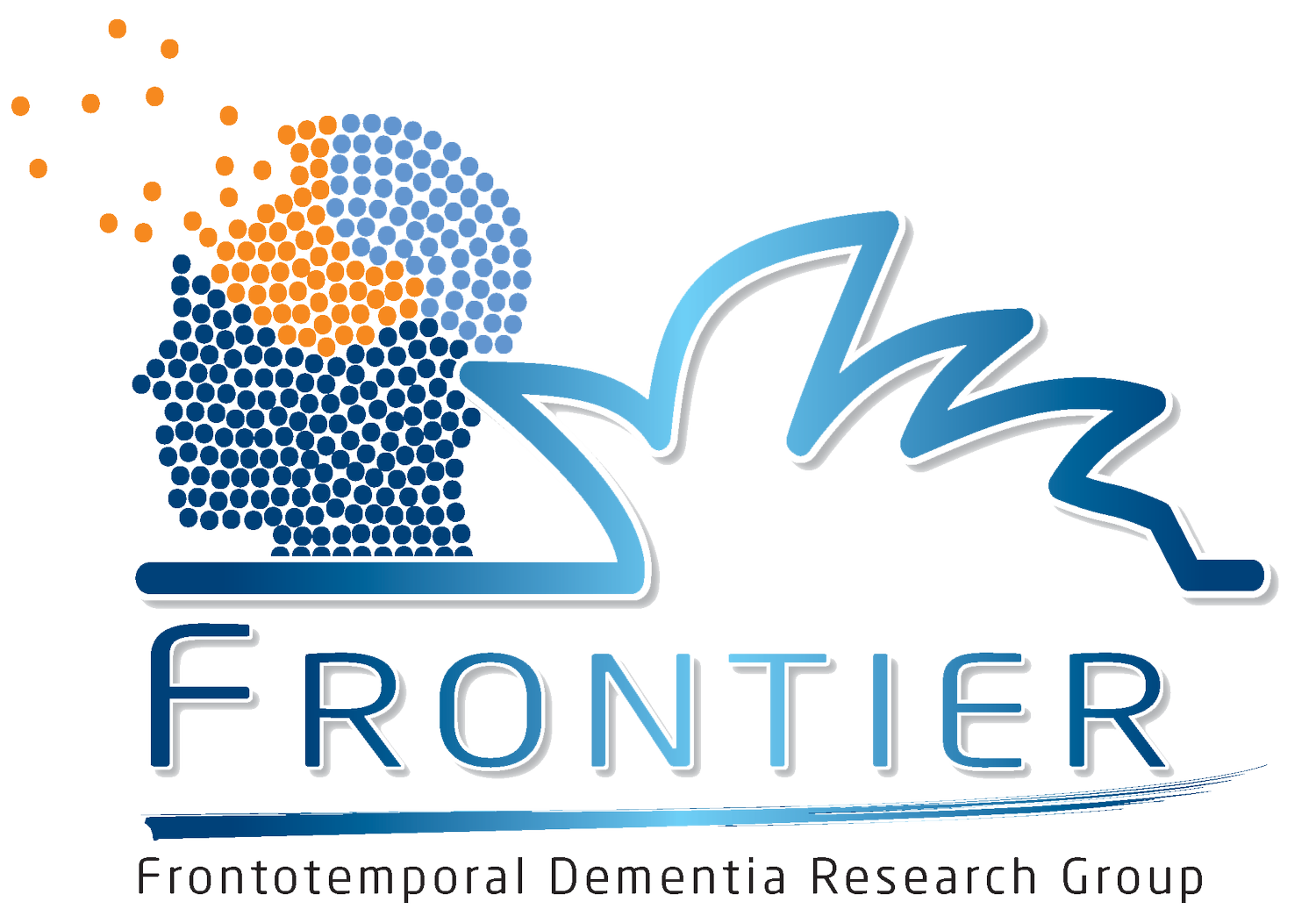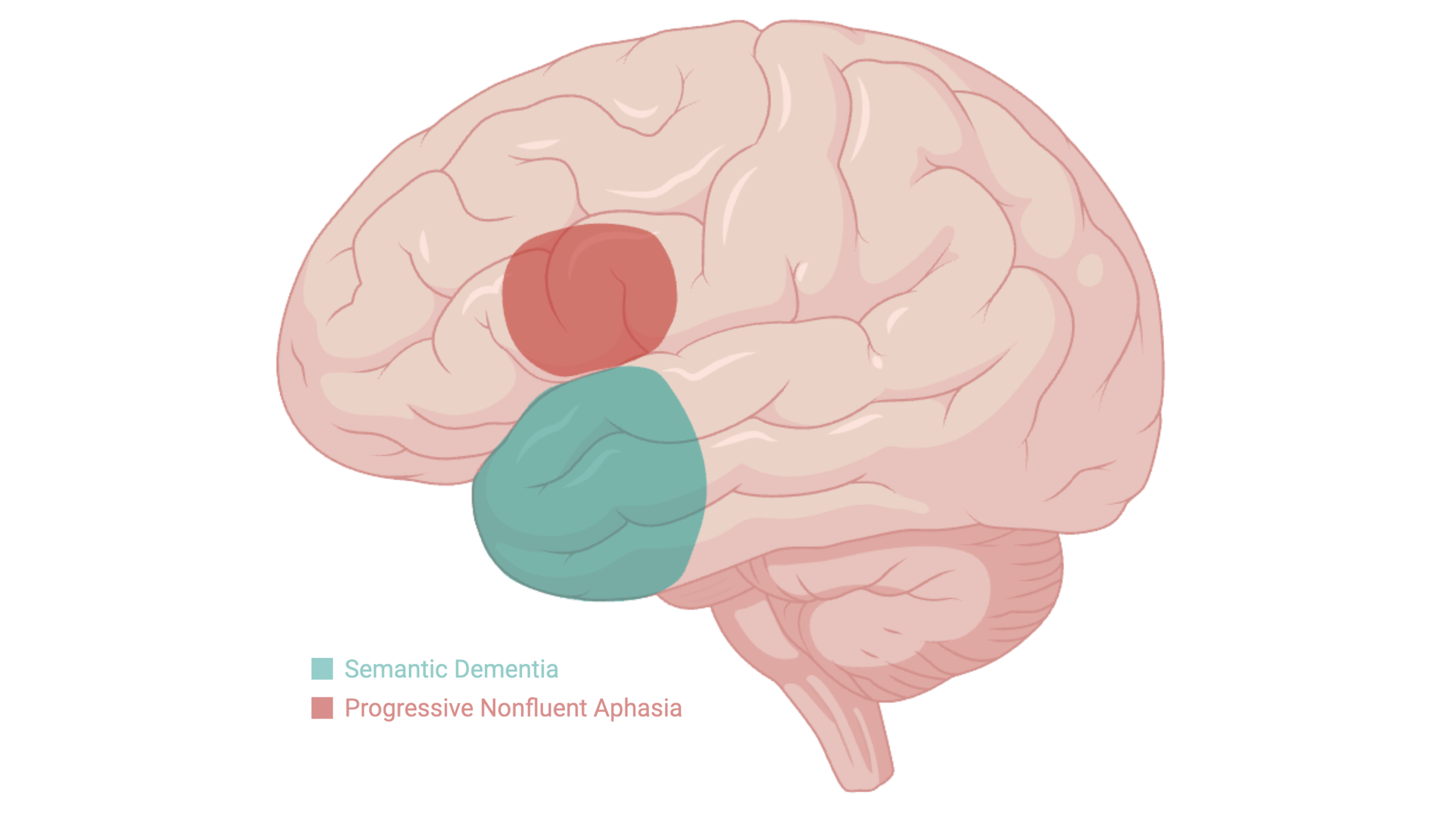Language Subtypes
Some individuals with FTD first present with progressive language difficulties. These syndromes are collectively referred to as primary progressive aphasia (PPA). There are two main FTD-related PPA variants: semantic dementia (SD) and progressive nonfluent aphasia (PNFA). Each is associated with distinct patterns of language breakdown and corresponding brain changes.
Also referred to as the semantic variant of PPA (svPPA), SD is a condition that causes a gradual loss of word meaning and conceptual knowledge. Individuals can usually still speak fluently and with correct grammar, but they have trouble naming everyday things or understanding the meaning of individual words.
Common features of SD:
Semantic Dementia (SD)
-
Individuals may struggle to name objects, people, or places—even though they can still recognise them visually.
-
Individuals may appear to understand conversations but misinterpret key words or fail to follow instructions.
-
Over time, some individuals have difficulty recognising familiar faces (known as prosopagnosia) or common objects, even though their vision is normal.
These difficulties are linked to gradual shrinkage (atrophy) in the front part of the temporal lobes of the brain, usually starting on the left side. If the right side becomes affected later on, changes in behaviour or social awareness can also develop.
Progressive Nonfluent Aphasia (PNFA)
Also known as the nonfluent variant of PPA (nfvPPA), PNFA is a condition that causes increasing difficulty with speech. Individuals may speak slowly and with effort, mispronounce words, or leave out small connecting words, making speech sound fragmented or ungrammatical.
Common features of PNFA:
-
Talking takes more effort, with long pauses and reduced fluency.
-
Individuals may struggle to put together grammatically correct sentences, especially in casual conversation.
-
Some individuals also have trouble coordinating the mouth and tongue movements needed for smooth, clear speech.
Brain scans often show shrinkage in a part of the brain called the left posterior frontal lobe. As the condition progresses, other nearby areas can also become involved.
Beyond Language
While speech and language problems are the most prominent early features of SD and PNFA, the underlying diseases are progressive and eventually affect other parts of the brain. As the disease advances, individuals may also experience:
Changes in cognition: such as difficulty with attention, planning, or memory
Changes in behaviour: including apathy, reduced empathy, or compulsive habits
Challenges in daily life: such as difficulties with work or managing everyday tasks
Recognising the specific PPA subtype—and understanding how the disease may progress—can help guide treatment decisions, plan support, and prepare for future needs.
For more information, on some of the terms used can be found in Glossary.



